Art works with a price on application (P.O.A) button below them are for sale. Please click on the button and submit the contact form so we can determine the total price including shipping to your door. Alternatively, you can call Catherine direct on 0412 233 821.
1978 - 1979 FEMININE MYTHOLOGY
Please click on any of the images in our portfolio to see the full, uncropped versions.
White Girls’ Mythology 600mm x 400mm
Male & Female magazine photo collages, maps, op shop ephemera, 600mm x 400mm
Female Imagery examined the female archetypes in popular culture existing in the classics, children’s annuals and women’s and men’s magazines of the time!
1980 FEMALE IMAGERY PERFORMANCE ART
Please click on any of the images in our portfolio to see the full, uncropped versions.
Emotional Mechanics
Emotional Mechanics - fairy lighting, ribbons, flowers
Women at Work George Paton Gallery Melbourne University
Black Holes
Black Holes - Paper cut-outs, balloons, tailor’s dummy, batteries and circuitry PRAXIS Fremantle W.A.
What was Performance Art for you at this time?
Performance Art was a tool for tracking my Intuition, the focus of my art practice at that time in a struggle to connect what was going on for the Individual to that which is happening in Society. I was exploring the ‘Personal is Political’ a term originating from Carol Hanisch of the American Women’s Liberation Movement. I used common objects to symbolise my everyday thought processes and actions; what as going on for me.
Why did you make Performance Art ?
I began making Performance Art pieces after completing a series of Collages called ‘Feminine Mythology’, made from women’s magazines and girls’ annuals. Several Performance Pieces were nude works using ‘female’ imagery such as nets, lace and tuile, using the same collage process of layering and juxtaposition in real time, making communication with my audience more immediate and direct, bring the audience into my world. The multi-dimensional performance allowed me to explore more complex ideas such as processes of female conditioning, Jungian notions of animus and anima and the emotional/physical dimensions of post particle physics.
1990 - 2300 COLOUR COMMISSIONS
Please click on any of the images in our portfolio to see the full, uncropped versions.
Westgate Bridge Experience Nicholas Scott Real Estate 3m x 1.5m
Westgate Bridge Experience Yarraville Nicholas Scott Real Estate 3M X 1.5M Oil on canvas
Applying Colour theory within the built environment creates mood in space
In Flight- / Glaxo Pharmaceuticals / Anglesea Health Clinic / Tarneit Skies Retirement Village / Revelation / Westgate Experience, Nicholas Scott Real Estate
1990 - 2300 CREATIVE COMMUNITY COLLABORATIONS
Please click on any of the images in our portfolio to see the full, uncropped versions.
Tarneit Skies Retirement Village
Tarneit Skies Retirement Village Collaborative Artwork. Photo mural designed in conjunction with Graphic Designer Elzette Bester. Residents of Tarneit Skies Retirement Village shared photos of their life connections to Tarneit from childhood migration to present family life.
Top Panel - 6m x 1m x 2 panels Tarneit Skies Retirement Village 6m x 1m Media: Photoprint on canvas with residents’ photos.
Bottom Panel - 6m x 1m x 2 Tarneit Skies Retirement Village Collaborative Artwork. Photo mural designed in conjunction with Graphic Designer Elzette Bester. Residents of Tarneit Skies Retirement Village shared photos of their life connections to Tarneit from childhood migration to present family life.
Sandy Beach Centre, Sandringham: The Wall
20m x 6m, Media: Ceramic, canvas, sculpted fabric, burnished steel, felt, beading.
This building refurbishment generated a collaborative creation of a mural in the main hall, made for and by this community. Participants from 120 programs contributed their skills in felt making, steel burnishing, ceramics, fabric construction, embroidery to create this massive mural.
Marsupial Masterpieces
Marsupial Masterpieces 2014 — 2024.. Dimensions...25m x 20m. each bandicoot. Media: Local Indigenous wildflowers, corrugated iron and reused old carpet for solarising noxious weeds Kikuyu grass and Chilean Needle Grass. Weed eradication by use of carpet and corrugated iron in the form of the eastern barred bandicoot exposed to all weathers, for one year as seen in left in left photo.. After one year the corrugated iron is removed and the ground is.ready for planting. In collaboration with Friends of Iramoo Grassland Reserve, St Albans. Drone photo by ecologist Dr Debbie Reynolds of flowering Buttoned Wrinklewort & Chrysocephalum Apiculatum planted after weed eradication of kikuyu grasses and chilean needle grass at Iramoo Grassland Reserve, Cairnlea, Victoria
Bunjil and Bandicoot Flight Path
Bandicoot Flight Path Dimensions - each bandicoot 30m x 10 and Bunjil 40m x 25m. Media: Local Indigenous wildflowers, corrugated iron and reused old carpet for solarising noxious weeds Kikuyu grass and Chilean Needle Grass.
Bunjil and Bandicoots crossing the Western Plain will be seen from the air by passengers arriving at and departing from Melbourne Airport. Revegetated indigenous wildflowers, planted in the shape of Bunjil and giant Bandicoots will be created by schools, community groups, local Melbourne Airport and Parks Victoria staff with the support of Wurundjeri Woiwurrung’s Narrap Rangers and ongoing programs to foster stewardship of the land over time.
Site of Woodlands Historic Park Bunjil & Bandicoots Flight Path
Passengers will see Bunjil flying & Bandicoots travelling across the Western Volcanic Plains as they land at Melbourne Airport
'...an Environment Education Centre to encourage schools, community groups and the general public to make use of the land for educational purposes by using the land and experiencing it in its natural state.... '
1994 Ramsdell Trust Deed Clause 8 p3
- Intergenerational programs which embed Gunaikurnai Traditional Ecological Knowledge within local residents of and visitors to these 12 acres of remnant vegetation.
- Create experiences which encourage protection and maintenance of our local habitats with hands on arts, citizen science and Gunaikurnai cultural teachings
- Familiarise participants with Vegetation types: Limestone Box Forest Clay heathland, Blackthorn scrub , Gippsland Grey Box , Blue Box, Gippsland Red Gum
- To experience the rhythms of the Gunaikurnai seasons in activities: bird watching, photography, movie making on mobile phones, plant identification, colour studies, weeding, planting, growing Indigenous foods, botanical drawing, pruning skills, woodcraft in making a bird box, a spirtle for honey pots, bee hotel, colouring -in books for Oneonta species, tour guiding.....To link with AusVels Curricula P-12
2022 - Partnerships with Living Bung Yarnda, Lake Tyers Beach Coastcare
2022 - Program partnerships with Bird Life Australia, Complete Health Lakes Entrance,
2022 - Tooloo Arm Primary School Program - Onsite Seasonal observation of trees, wildflowers, fungi, insects, birds I.D,cubbie building,
2022 - Lakes Entrance Secondary College - On-site Seasonal Observations of plants, animals, insects, birds, weather patterns, food growing, Citizen Science Projects, iNaturalist App. Projects.
2022 - Proposed Program with Tooloo Arm Primary School 2021 - Formation of Oneonta Landcare Group - Working Bees and Monthly meetings, member East Gippsland Landcare Network
2021 - St Brendan's Primary School Program: Koorie Education Program: Plant Identification and Planting: Kangaroo, Wallaby and Spear Grasses, Animal tracks, Orchid I.D.
In Process:
- Linking with Gunai Kurnai Seasonal Calendar with Gunaikurnai artists and educator
- Program delivery by Bird Life Australia,
- Orienteering Australia,
- Fungi Festival,
- Wildflower I.D. Weekends,
- Working Bees with Citizen Science monitoring and tracking wildlife
- Fire Education program
Nungurner Cultural/Walking Trail
Nungurner Nature/Cultural Trail
Connect existing segments of three endangered ecological systems in a loop Trail linking Gunaikurnai Traditional Ecological Knowledge with Nungurner Landcare, Gunaikurnai artists, non Indigenous artists and scientists in a Digital Interpretive Trail.
Nungurner Cultural Trail is a collaboration of organisations. protecting and maintaining three significant endangered ecological classes: Limestone Grey Box Forest, Littoral Rainforest, Warm Temperate Rainforest
The Collaboration will develop an On-Ground and Digital Interpretive Trail with minimal disturbance to existing tracks such as the existing Significant Vegetation Track. In some sections paths will be strengthened to meet pedestrian safety standards and augmented with statutory signage. The Nungurner Trail is a cultural experience of connecting to country; for the organisations involved with Gunaikurnai Land and Waters Aboriginal Corporation, in its creation and for those who choose to walk the trail . ....slow down, absorb and regenerate.
2000 - 2030 DECOLONISE
Please click on any of the images in our portfolio to see the full, uncropped versions.
Waking up to the Doctrine of The Doctrine of Discovery and its spiritual, political and legal justification for colonisation and seizure of land not inhabited by Christians, led to my exploration of early colonial images of George Augustus Robinson, and John Batman as well as John Helder Wedge,Batman’s Solicitor General; major influences in the foundation of Victoria. Especially pertinent at this current time of the process of achieving Treaty! ‘Foundational elements of the Doctrine of Discovery can be found in a series of papal bulls, or decrees, beginning in the 1100s, which included sanctions, enforcements, authorisations, expulsions, admonishments, excommunications, denunciations, and expressions of territorial sovereignty for Christian monarchs supported by the Catholic Church.
Reversing the Missionary Position
2m x 2m Media: Oil on canvas.
George Augustus Robinson, Methodist preacher from Cheshire fronts The Conciliation, the first European painting of Tasmanians by Benjamin Duttereau. This 1840 painting idealised the work of George Augustus Robinson, who took up the post of 'Protector of Aborigines' in Van Diemen's Land on 27 January 1830. and in Victoria in 1838. Benjamin Duterrau's The Conciliation was considered the first historical epic painting in the Australian colonies.
Australian Coat of Arms
2m x 2m Media Oil, marble dust on canvas.
The contemporary Australian Coat of Arms is backgrounded by textual references from the field manuscripts and notebooks of the first European explorers of ‘The Land of Iramoo’*
‘Iramoo NW7’ is taken from John Batman’s journals of 1835 as he crossed Iramoo (Woiwurrung for ‘grassland meeting place’ ) This refers to the grasslands of the Western Volcanic Plains of Western Victoria on which Melbourne is sited.
‘Open grassy plains’ is taken from John Helder Wedge’s field manuscripts 1835 as he explored and eventually settled in Werribee.
*’Iramoo’ was the Woiworung language name given by first inhabitants of the region, the Kulin Nations, to the great grassy plains that once encircled what is now Melbourne. Iramoo also meant a meeting place between tribes. The name Iramoo is used with permission from the Kulin Nations Cultural Heritage Organisation.
The Land at Iramoo
2m x 2m Media: Oil on Canvas.
‘Iramoo’*, the original Woiwurrung language name for the great grassy plains that once encircled the Melbourne area, is the inspiration for contemporary landscape paintings of St Albans, Cairnlea and Caroline Springs. Stencil imagery refers to endangered species of potoroos and bandicoots , whip snakes and striped legless lizards decimated within10 years of the introduction of cloven hooved sheep and cattle. Iramoo Wildflower Grassland Reserve regenerates Indigenous wildflowers Buttoned Wrinklewort, Chrysocephalum Apiculatum and Spiny Riceflower Pimelea Spinescens
*’Iramoo’ was the Woiworung language name given by first inhabitants of the region, the Wurundjeri,, to the great grassy plains that once encircled what is now Melbourne. Iramoo also meant a meeting place between tribes. The name Iramoo is used with permission from the Kulin Nations Cultural Heritage Organisation.
The Enlightenment
500mm x 400mm Media: Oil paint on photoprint.
Re - placing this image in a background of an 18th century Romantic landscape and titling it ‘The Enlightenment’ highlights the belief system held by the white colonisers, which continues today in many of our beliefs about progress and mastery of nature. Working to redress the destruction of indigenous culture including the degradation of the land by learning about my local environment, identifying the indigenous flora and fauna is a start for de-colonising my own thoughts.
Europe supported by Africa America (and Australia)
500mm x 400mm Media: Oil on Photoprint on canvas.
An improvisation on an allegorical illustration of naked African and American women supporting a naked white woman in necklace. copperplate engraving by William Blake in 1796 after an original illustration by Captain John Gabriel Stedman from his "narrative of a five years' expedition against the revolted negroes of Surinam," J. Johnson, London, 1813 Adding Australia to the mix of colonies brings perspective to the European colonial endeavour.
Backyarders at Iramoo
500mm x 400mm Media: Oil on Photoprint on canvas.
As a volunteer at Iramoo Wildflower Grassland Reserve I can imagine the presence of people fishing in the Jones creek (what is the Aboriginal name?) The back fences of suburban Cairnlea, border the 35 hectares of Iramoo Wildflower Grassland Reserve behind Victoria University, St Albans. Original photo of wood engraving ‘Group of Aborigines Fishing with Spears’ created March 1862. Owned by State Library of Victoria.
Someone Got Screwed: Decolonising Australia
800mm x 600m Media: Oil on canvas.
These three paintings background the Doutta Galla Treaty, the fake treaty which John Batman signed with the Wurundjeri tribe of 6 June 1835. Parts of John Helder Wedge’s drawing The text ‘I purchased from them 600,000 acres ...I delivered them blankets, looking glasses, scissors & flour ‘I also agreed to give them a tribute or rent yearly’.. is taken from John Batman’s journal.
Batman's Retreaty
800mm x 600mm, Media Oil on canvas.
This painting references the Doutta Galla Treaty, the fake treaty which John Batman signed with the Wurundjeri tribe of 6 June 1835. Parts of John Helder Wedge’s drawing ‘Women collecting murnong’ such as trees and figures are placed in the present landscape at Iramoo Grassland Reserve, set in the contemporary urban landscape of Cairnlea, St Albans and Caroline Springs. The text ‘I purchased from them 600,000 acres …I delivered them blankets, looking glasses, scissors & flour…. I also agreed to give them a tribute or rent yearly’.. is taken from John Batman’s journal. Concealed within th e painting is also a map references ‘NW7’ as well as the text ‘appears admirably suited to sheep’.
Doutta Galla Treaty
800mm x 600mm, Media Oil on canvas.
Truganina arrived with George Augustus Robinsons into Port Phillip colony in 1838, three years after the Doutta Galla Treaty was 'signed' by Wurundjeri 'chiefs'; At the bottom of Batman's journal there are marks that look (according to historian Alistair Campbell) suspiciously like the signatures on the treaty, leading some to think that Batman may have forged these signatures on the Treaty.It is also possible that the marks were made by one of the five Aboriginal men Batman brought with his from Parramatta, since they resemble marks commonly by the Parramatta tribe.
Backyarders of Iramoo Drypoint
300mm x 200mm Media: Etching.
A pastiche of early colonial etchings as the current suburban backyards of Cairnlea and St Albans Victoria, still resonant ancestral presence.
The Treaty's All Done
3m x 2m x 2m Media Oil on canvas.
Treaty demands the acknowledgement of the Sovereignty of First Nations of Australia and the dark side of British colonisation. I experience it in my own backyard, the endangered grasslands of Victoria’s Volcanic Plains, where the first white invader colonists were John Batman and his Surveyor General John Helder Wedge. William Buckley (left panel referencing John Helder Wedge) escaped from Sullivan’s Cove Port Phillip Bay and lived with the Wathaurung for 32 years. At the time William Barak (middle and right panels ) was aged 16 and forced from his stolen land to Coranderrk Reserve Healesville, Victoria. This triptych was a finalist in the Sulman Prize N.S.W. Gallery 2011.
2010 -2020 CONNECT TO LAND
Women Collecting Murnong
800mm x 600mm. Media: oil on canvas.
The land is at Iramoo Wildflower Grassland Reserve, St Albans behind Building 3, Victoria University off Joan Kirner Drive, St Albans. The Aboriginal figures are appropriated from a drawing entitled ‘Women collecting Yam Daisy’ by John Helder Wedge from his Field Notebooks 1832 -1838.
Wurundjeri Elder Annette Xiberras at Iramoo
800mm x 600mm Media: OIl on canvas.
The foreground figure is Annette Xiberras, a * Wurundjeri Elder at the Iramoo Wildflower Grassland Reserve, St Albans behind Building 3, Victoria University off Joan Kirner Drive maintaining and preserving the sacred sites throughout the area in St Albans right up to Bullum Bullum in Taylor’s Lakes and Keilor.
*Wurundjeri Tribe and Land Compensation Council based at Abbotsford Convent in Collingwood.
Women Collecting Murnong 2 at Iramoo
800mm x 600mm. Media: Oil on canvas.
The land is at Iramoo Wildflower Grassland Reserve, St Albans behind Building 3, Victoria University off Joan Kirner Drive. The Aboriginal figures are appropriated from a drawing entitled ‘Women collecting Yam Daisy’ by John Helder Wedge from his Field Notebooks 1832 -1838. Wedge’s drawing of the trees also has also been incorporated into the work, juxtaposing them with the contemporary MacMansions of Cairnlea, Caroline Springs and St Albans.
Gaia/ Orange Bettong /Orange Wedgie
300mm x 300mm Media: Oil and wax on canvas.
An exploration of surface qualities with paint and wax, thinly spread and allowed to dry. On this is stamped a number of stencils pertaining to other paintings and prints in this ‘Treaty Series’.Underlying the surface is the suggestion of a female form, stamped with stencils of suburban McMansions.
BARKWORKS
Please click on any of the images in our portfolio to see the full, uncropped versions.
William Barak Code series ‘Paperbark Pixelations - 2016
2.5m x 2.5m Media: Malleleuca Quinquenervia (paperbark), plywood and aluminium.
Referencing the 1866 photo of Wurundjeri Nurungaeta / Leader* William Barak, who along with the few Wurundjeri survivors of the frontier wars, were moved to Coranderrk Healesville. * Woiwurrung language of the Wurundjeri tribe of Southern Victoria. Catherine van Wilgenburg consulted with the Wurundjeri Tribe and Land and Cultural Heritage Council* about this work on February 17 2015.
Bruce Pascoe
2m x 2m Grey Box/Eucalyptus Bosistoana & Paperbark Melaleuca Quinquenervia on MDF.
One of a series of bark paintings entitled ‘Paperbark Pixelations’. The portrait references Aboriginal Bark Petitions (Yirrkala Petition 1963, Barunga Statement 1988, Uluru Petition 2015), in an acknowledgement and ongoing commitment to learning Traditional Ecological Knowledge and Aboriginal Cultural Heritage of the land in my own backyard.
This work documents my transformation from Eurocentric cultural values to emerging Australian eco-aesthetics and their origins within contemporary Australian Aboriginal cultures; from traditional western European portraiture in layerings of ancient futures in digitised bark with Traditional Spirit Stain (available from Bunnings! ) and acrylic paint. The inspiration for this work arose from reading ‘Dark Emu’ ‘Convincing Ground’ ‘Bloke’ and Bruce’s children’s books, while volunteering with friends of Iramoo Grassland Reserve, St Albans, in Melbourne’s West, Victoria; propagating and planting endangered wildflowers of the western volcanic plains.
Grounded in my local community, the real history of Melbourne emerges as I learn about the true story of the Wurundjeri and now Gunaikurnai nations, and uncovering a truer history of colonisation than the whitewashed version I was fed.
Skin, Settlement, Murnong, Eye of Bunjil
Dimensions: 500mm x 500mm Melaleuca Quinquenervia and paint on canvas.
Series entitled ‘Paperbark Pixellations’ from trees in my own street in Altona North and throughout Victoria. They mark my journey from settlement to citizenship by connecting with the land.
LOCAL INDIGENOUS WILDFLOWERS
Local Indigenous Wildflowers
300mm x 300mm Media: Oil and wax on canvas.
This series draws attention to wildflowers, an important aspect of Victoria’s biodiversity.
It emerged from the artist’s work at Iramoo Grassland Reserve, Indigenous Plant Nursery and Seed Orchard for the propagation, maintenance and preservation of the -1% remaining endangered grasslands of Victoria’s Volcanic Plains.
WHITEFELLA SHADOW SERIES
Please click on any of the images in our portfolio to see the full, uncropped versions.
Whitefella Shadow Series Photoprints
Sharp shadows emerge in the bright daylight while walking the land, throwing into view the diversity of local Indigenous flora; as well as the diverse shadow forms recalling memories of ancestors known and unknown who introduced the infestations of European weeds threatening Indigenous human and more than human species.





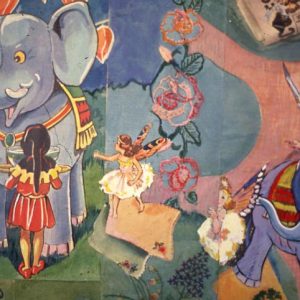





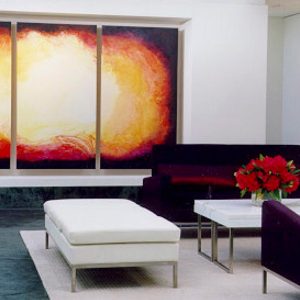






































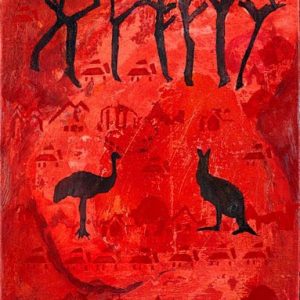










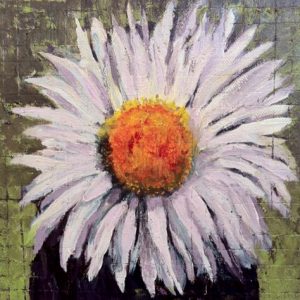

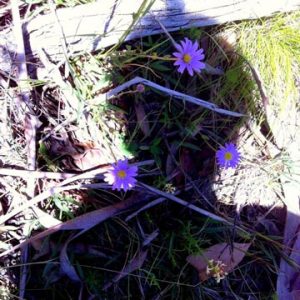


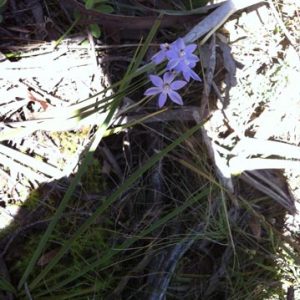
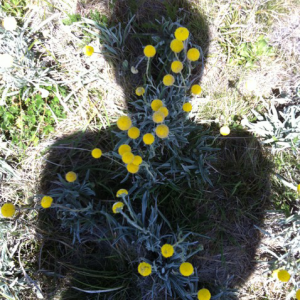

You must be logged in to post a comment.